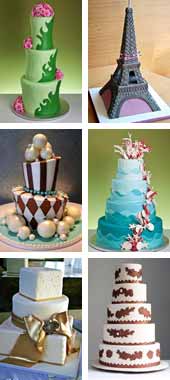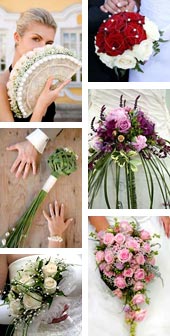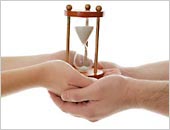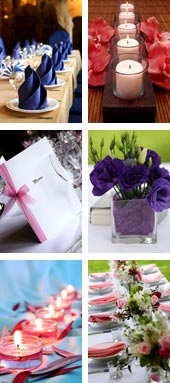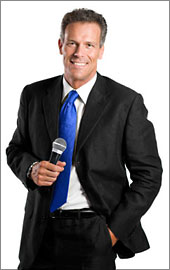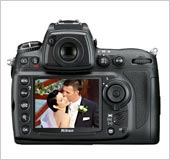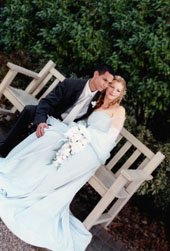Wedding Ceremony Order of Service
21 Step Wedding order of Service Guide
|
|
|
|
Some couples begin the ceremony by lighting a unity candle or candelabra. Although, customising the wedding vows or other aspects of the ceremony may add special meaning to your wedding day. It is still advisable to check with your priest or marriage celebrant for the propriety of the changes.
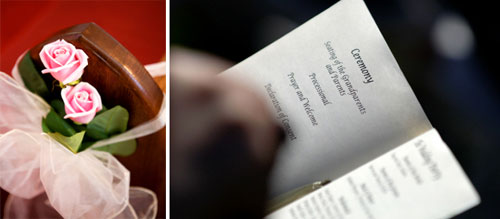
The Wedding Rehearsal
The wedding rehearsal usually takes place 2-7 days before the wedding day. This is when all elements - the bridesmaids, groomsmen, flower girls, ring Bearers, and of course the bride and groom and their parents come together for a trial run.
The Wedding Ceremony Outline
The wedding program or ceremony outline is usually given to guests at church weddings. The wedding program has the names of the bride and groom and the date and name of the church. The program needs the approval of the priest or minister before printing and should have all aspects of the service, such as readings, hymns and music.
On the Wedding Day:
1. Wedding Ushers
The wedding usher/s are the first to arrive, around 30-45 minutes before the wedding ceremony. They stand outside the church, greeting and directing the early guests to the appropriate seating arrangements and handing out programs or service notes and boutonnières for guests. The ceremony usher often doubles up as Groomsmen up-until the ceremony starts.
2. Groom, Best Man & Groomsmen
The groom, best man and groomsmen are the next to arrive and usually 30 minutes before the ceremony. The best man pays the organists and any church fees on behalf of the groom before taking his seat at the front of the church on the right-hand pew with the groom, in front of the groom's family waiting for the bride to arrive. If you have groomsmen in your bridal party, they wait outside for the bride and bridesmaids to arrive so they can walk down the aisle together.
3. Prelude Music
The organist plays the prelude music, setting the mood for arriving family and guests.
4. Wedding Seating Arrangements
The bride's family and friends arrive and are seated to the left of the church and the groom's family and friends, to the right.
5. Parents & Close Family
Parents and close family of the bride and groom should arrive 20 minutes early and take their place. The parents sit at the 1st pew and close family sit from the 2nd. Guests should arrive no later than 15 minutes prior to the ceremony. They are seated directly behind the bride and groom's close family. The brides father waits at the entrance of the church.
6. The Matron of Honour & Bridesmaids
The Matron of honour and bridesmaids arrive with the bride just before the start of the ceremony and stand at the entrance of the church – they meet up with the groomsmen. The bridal party wait outside the entrance. There should be at least one of the wedding ushers outside the entrance, at this stage all guests have arrived. If the wedding usher is also doubling up as a groomsmen, he takes his place with the other groomsmen – his role as usher has been completed and now takes his role as groomsmen.
Here Comes the Bride:
7. The Bride's Arrival
The bride and her father pause outside the church for a few moments with the bridal party. The bridesmaids help with the bride's hair, veil and train. Just before the bride enters the church, the matron of honour helps cover the brides face with the veil – if it's a traditional veil and if it's part of your tradition. The covering of the brides face is optional and will depend on the style of the veil and headpiece.
8. Processional Music
The wedding usher informs the organist that the bride is ready. The processional music begins and the congregation stands.
9. Junior Wedding Attendants
The flower girls and page boy or ring bearer enters the church and walks down the aisle. If you have only four adults in your bridal party, eg: bride, groom, matron of honour and best-man; the next to follow is the matron of honour. The best man is already at the front on the ceremony waiting with the groom.
10. Adult Wedding Attendants
If you have bridesmaids and groomsmen, they are next to walk down the aisle, arm in arm and coupled (you can also have 2 bridesmaids and one groomsman in the middle if the numbers are out), they take up their positions at the front of the ceremony - before the bride enters the church with her father.
11. The Bride & Her Father
The bride enters the church, walking down the aisle with her right arm resting on her father's left arm. The next step is optional; the bride is either followed by a train bearer or bridesmaid to help with the brides train or to make sure it is not bunched up. This can also be done by a family friend. If there is only four in your bridal party, for example; the bride, groom, matron of honour and bestman, someone else could hold the train. If the brides gown does not require a train bearer, then the bride just walks down the aisle by her father's side.
12. Groom & Best Man
The groom and best man move out of their pew to the chancel steps, and turn to watch the bride walking slowly down the aisle with her father, side by side.
13. Bride's Father
Before the bride reaches the chancel steps, the father takes his daughter's hand and places it in the groom's right hand. He takes his seat next to his wife, his role completed.
14. Bride & Groom
The Bride is greeted by the groom. She hands her bridal bouquet to the matron of honour, who can also help her lift back her bridal veil. The bride may prefer the veil be left in place until the minister pronounces them husband and wife, prior to the kiss.

The Ceremony Begins:
15. The Service Begins
The minister says a few introductory words to the congregation and the marriage ceremony begins.
The minister says a few words on the significance of marriage and some advice on the correct approach to marriage, outlining its purpose. He asks if anyone present knows of any reason why the couple should not be married and gives a last chance for objections to be raised.
16. Wedding Vows
The couple then take their wedding vows in turn, repeating the words after the minister and answer, 'I will'. (Taken from the 1928 revised version of book 1662 Book of Common Prayer).
| 'I (name) take thee (name) to be my wedded wife/husband, to have and to hold from this day forward, for better for worse; for richer for poorer; in sickness and in health; to love and to cherish; till death us do part, according to God's holy law; and thereto I give thee my troth'. |
17. Ring Exchange
The best man gives both rings to the minister to be blessed. The bride's ring is then given to the groom, who places it on the third finger of her left hand and repeats the words:
| 'With this ring I thee wed; with my body I thee honour; and all my worldly goods with thee I share. In the name of the father, the son and of the Holy Ghost'. |
The bride then repeats the same words as she places the groom's ring on his finger. The wedding vows and ring exchange may be custom made for your wedding. But be sure to get this approved by your priest, clergyman or marriage celebrant before-hand – for the propriety of the changes.
18. Husband & Wife
The minister will speak a few words to declare that the couple are now husband and wife: the bride and groom kiss.
The minister says: 'Those whom God has joined together, let no man put asunder'.
19. Signing The Register
The final stage is to sign the register. This usually takes place with the bride and groom, their parents, the best man, matron of honour and their attendants present. A register entry copy, is usually given to the bride by the minister for her to keep.
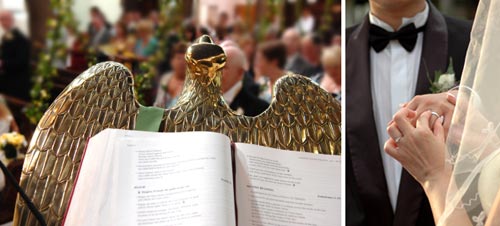
20. Leaving The Church
When the signing of the register has finished, the bridal party leaves the church. The bride and groom lead the way, while the organist plays the recessional music. Next to leave, is the best man and matron of honour, followed by the other junior and adult attendants, the bride and groom's parents. The congregation follow after the wedding party has passed by.
21. The Receiving Line
You may choose to have a receiving line after the wedding ceremony. If not, your guests and friends can mingle after the ceremony, leaving a receiving line at the reception instead.
However if you do want a receiving line after your ceremony, ask your church for their permission first. There may be another wedding ceremony directly after yours and you may be required to leave the premises quickly.
Here's an example of a wedding ceremony line-up:
Bride's Mother
Bride's Father
Groom's Mother
Groom's Father
Bride
Groom
Matron of Honour
Best man
Bridesmaid
Groomsmen
Bridesmaid
Groomsmen,
Bridesmaid
Groomsmen etc...
![]()
***wedding-ceremony-links.shtml***
|
|
